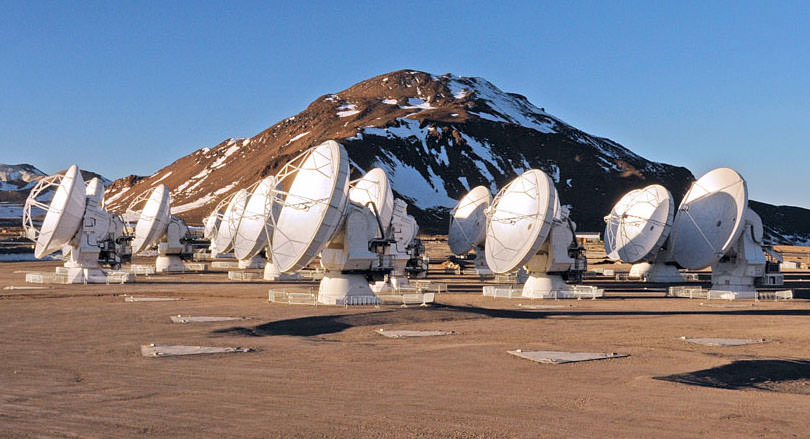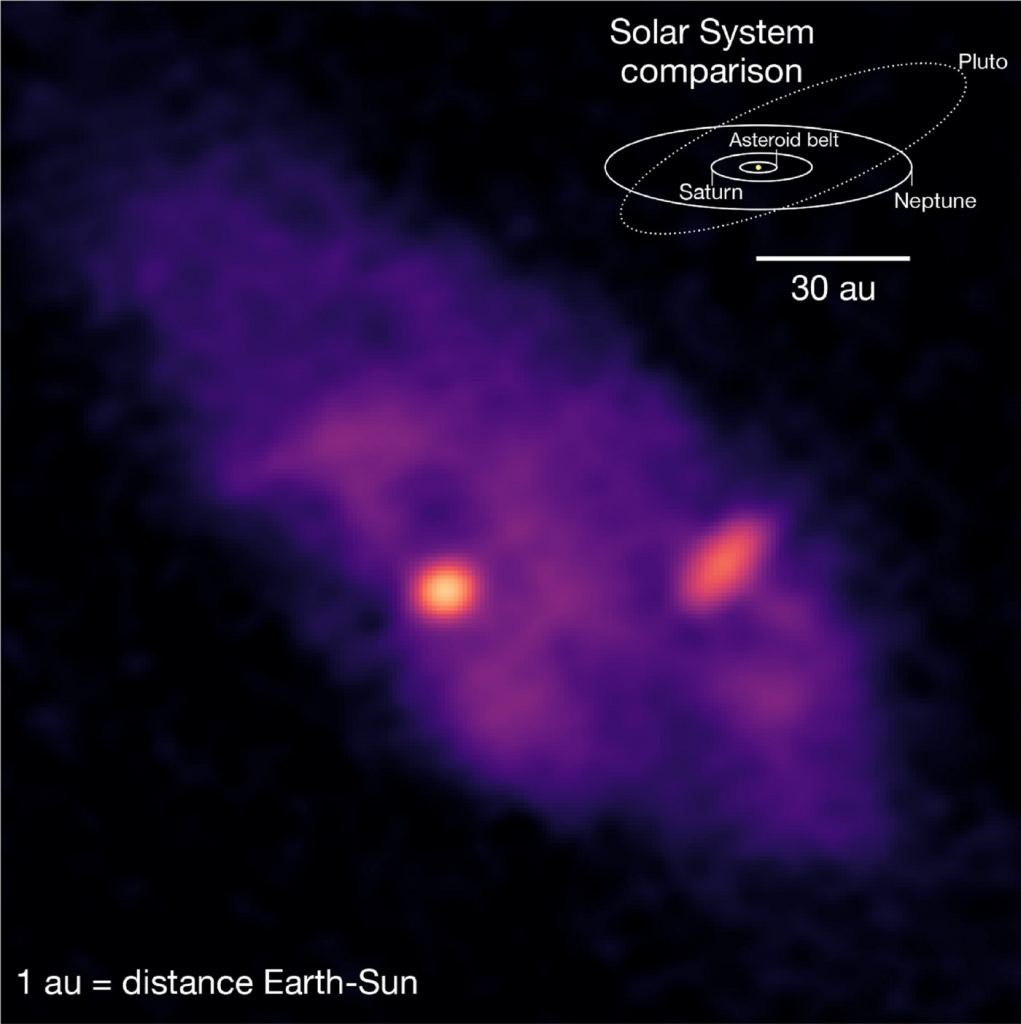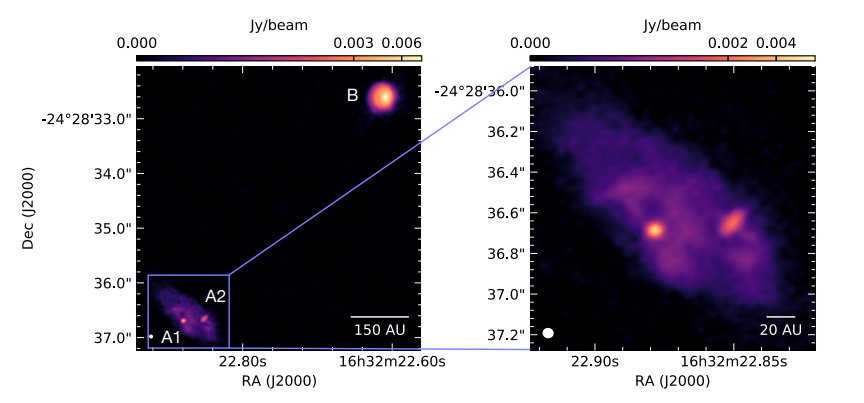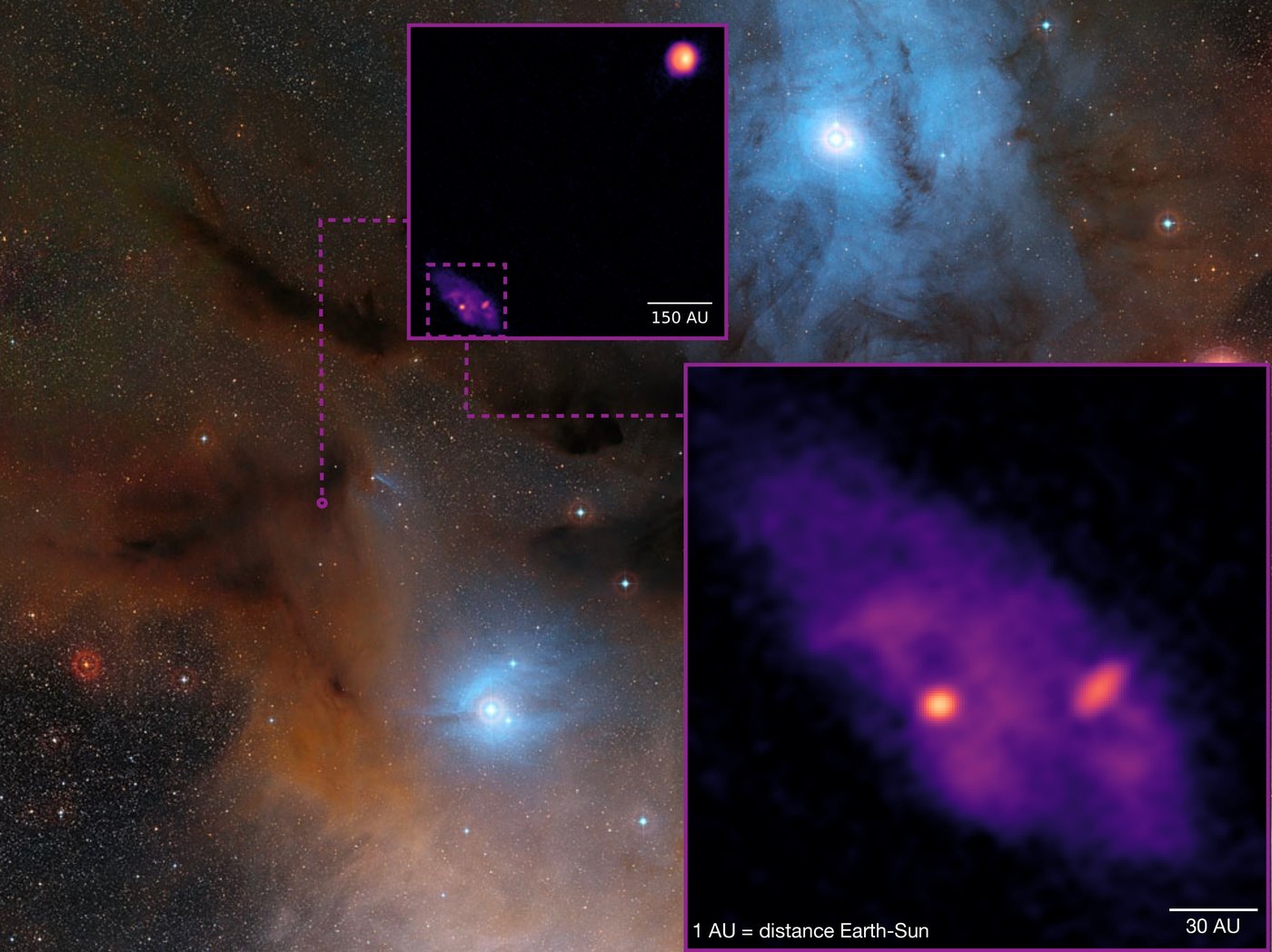About 460 light years away lies the Rho Ophiuchi cloud complex. It’s a molecular cloud—an active star-forming region—and it’s one of the closest ones. R. Ophiuchi is a dark nebula, a region so thick with dust that the visible light from stars is almost completely obscured.
But scientists working with ALMA have pin-pointed a pair of young proto-stars inside all that dust, doing the busy work of becoming active stars.
The binary system of stars is called IRAS 16293-2422, and there’s a third star that’s also part of the system. It’s a widely-studied binary pair, partly because observations have revealed the presence of complex organic molecules, including a simple sugar, in the gas around the stars. That showed scientists that the building blocks for life can be present in the material that solar systems form out of.
But this study was about the pair of proto-stars themselves, rather than the building blocks of life. The authors set out to learn more about the morphology and the kinematics of this young system
Lead author of this new work is María José Maureira from Germany’s Max Planck Institute for Extraterrestrial Physics (MPE), an international powerhouse of scientific research. The study’s title is “Orbital and mass constraints of the young binary system IRAS 16293-2422 A.” It will be published in The Astrophysical Journal.
Dark nebulae like Rho Ophiuchi are difficult to study. Grains of interstellar dust block visible light. Astronomers have to observe them in radio or infrared. In this new study, the researchers used ALMA (Atacama Large Millimeter/sub-millimeter Array) to probe through all the light-blocking dust. As ALMA’s name makes clear, it observes wavelengths of about one millimeter, between infrared and radio. ALMA is an interferometer, combining 66 high-precision antenna as one telescope, giving it a high angular resolution.

Inside the Rho Ophiuchi dark nebula lies a binary system named IRAS 16293-2422 A. Though it’s already a widely-studied object, previous studies produced some conflicting results. Different observations at different wavelengths showed multiple compact sources of radiation at different locations. The thick dust was making things difficult.
This study went further than previous studies. ALMA allowed the team of researchers to pinpoint the sources within the dark nebula. Astronomers already knew about the presence of what’s known as Protostar-B in the system, a well-known object. But their observations also revealed the two compact point sources of radiation, A1 and A2, in more detail than ever before.
“The small disks are probably still being fed and growing!”
Paola Caselli, STudy Co-Author and director at MPE, and head of the Center for Astrochemical Studies.
In thier paper, the authors write “Here, we present ALMA Band 3 continuum observations with a resolution of 0.046” (6.5 au) that reveal for
the first time two compact sources at wavelengths tracing dust thermal emission, coincident with the location of the cm compact sources A1 and A2, thus confirming IRAS 16293 A1-A2 as a binary.”
“Our observations confirm the location of the two close proto-stars and reveal that each is surrounded by a very small dust disk. Both, in turn, are embedded in a large amount of material showing complex patterns,” said lead author Maureira in a press release.

Both young stars are similar in mass to the Sun. A1 is just under one solar mass, while A2 is about 1.4 solar masses. Each one is embedded in its own dust disk. A2’s dust disk is somewhat larger than A1’s, and appears at an angle relative to the orientation of the Rho Ophiuchi cloud structure. That’s an unusual detail, and points to some chaos in the system. The already known Protostar B has a disk that’s face-on from our vantage point, adding to the chaotic nature.
The team had 30 years of data on this system at their disposal. They added their new observations to all of that data, and came up with some new conclusions. The two proto-stars are orbiting each other every 360 years, at an orbit that’s similar to Pluto’s full extent in our Solar System.
“This is the first time that we were able to derive the full orbital parameters of a binary system at this early stage of star formation,” said co-author Jaime Pineda, also from MPE, who contributed to the modelling.
“With these results we are finally able to dive into one of the most embedded and youngest proto-stellar systems, unveiling its dynamical structure and complex morphology, where we clearly see filamentary material connecting the circumstellar disks to the surrounding region and likely to the cirbumbinary disk. The small disks are probably still being fed and growing!” emphasizes Paola Caselli, director at MPE and head of the Center for Astrochemical Studies.

As part of their observations the team also looked at organic molecules. By observing the spectral lines, they were able to gain additional information on the binary pair. That helped them more fully characterize the motion of the gas around both stars.
“This was only possible thanks to the great sensitivity of ALMA and the observations of molecules which uniquely trace these dense regions. Molecules send us signals at very specific frequencies, and, following changes of such frequencies across the region (due to internal motions) one can reconstruct the complex kinematics of the system. This is the power of astrochemistry.”

The authors sum up their findings in the paper’s conclusion. “The range of protostellar masses inferred from the orbital analysis and the gas kinematics are consistently higher than previous estimations using lower resolution observations…”
They also point out that the system is likely gravitationally bound. “…the binary system A and single source B are also likely bound, forming a triple hierarchical system.” The authors say that further observations and simulations will “…help to further constrain the dynamics and individual masses of this deeply embedded triple system.”

